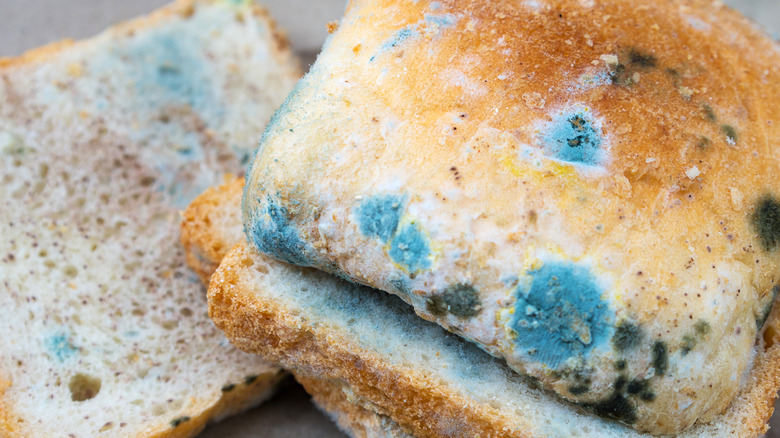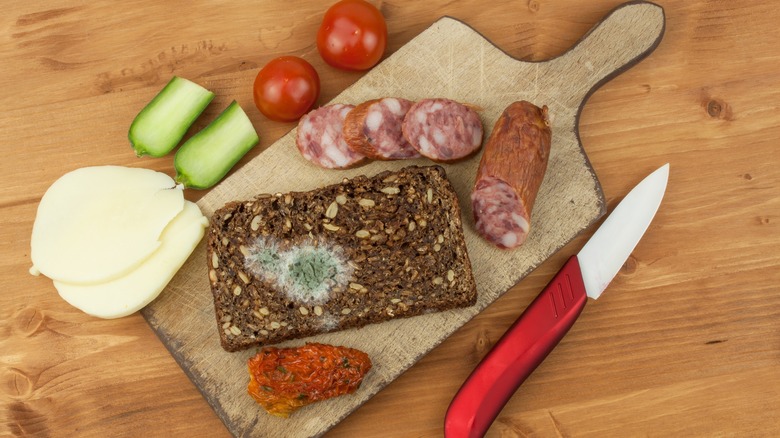When You Eat Moldy Bread, This Is What Happens To Your Body
Have you ever come across a situation when you wanted to treat your family to the perfect sandwiches? You prepared all the dainty ingredients, neatly cut the veggies, grilled the meat, and got the condiments and spreads ready, but as soon as you opened the bag of bread, you found some gray-green fuzz on some of the slices?
Such moments are surely disappointing, and when this happens, most people prefer to throw away said moldy slices. On the other hand, some people — in a bid to reduce wastefulness — only get rid of the moldy part, but don't mind eating the remaining unspoiled bread. There is also a third category of people: Those who eat moldy bread unknowingly. While just the thought of eating mold would gross out the majority of people because of its unsightly appearance, the question remains: What would happen to your body if you consume mold?
According to Medical News Today, mold is a common type of fungus that grows in moist and warm environments. It has many different types and can grow on a variety of surfaces, including food, fabric, glass, wood, and paper. Mold contains spores — cells that allow mold to reproduce (via MedlinePlus). These spores disperse in the air, thereby making the transmission of mold super easy. That's the reason why mold grows so fast irrespective of the surface. If you see a tiny green spot on your bread in the morning, chances are you will see several more the next day. Keep scrolling to find out what happens if you consume these spores.
Is it safe to consume moldy bread?
While a lot of people do not mind consuming moldy bread after removing the spoiled parts, food safety experts suggest otherwise.
"We don't recommend cutting mold off of bread, because it's a soft food," Marianne Gravely, a senior technical information specialist for the United States Department of Agriculture told NPR, adding that it is easier for the "roots" or "tentacles" of the mold to penetrate deeper when it comes to soft food like bread. Gravely added that "mold's penetration into a piece of bread may be greater than a quick look-over suggests."
Eating moldy bread, in most cases, won't cause any significant harm, but it could lead to nausea, diarrhea, or vomiting depending on the overall health of the individual and the amount of mold consumed (via Healthline). However, for those who have an allergy, a weak immune system, or breathing issues, eating mold could lead to some serious health-related problems. This is because those with underlying conditions could experience lung infections, fever, asthma attacks, and skin or eye irritation, among other symptoms, when exposed to mold (via Medical News Today).
Therefore, the next time you come across moldy bread, don't simply try to remove the spoiled parts, as consuming the remaining bread could potentially make you sick.

